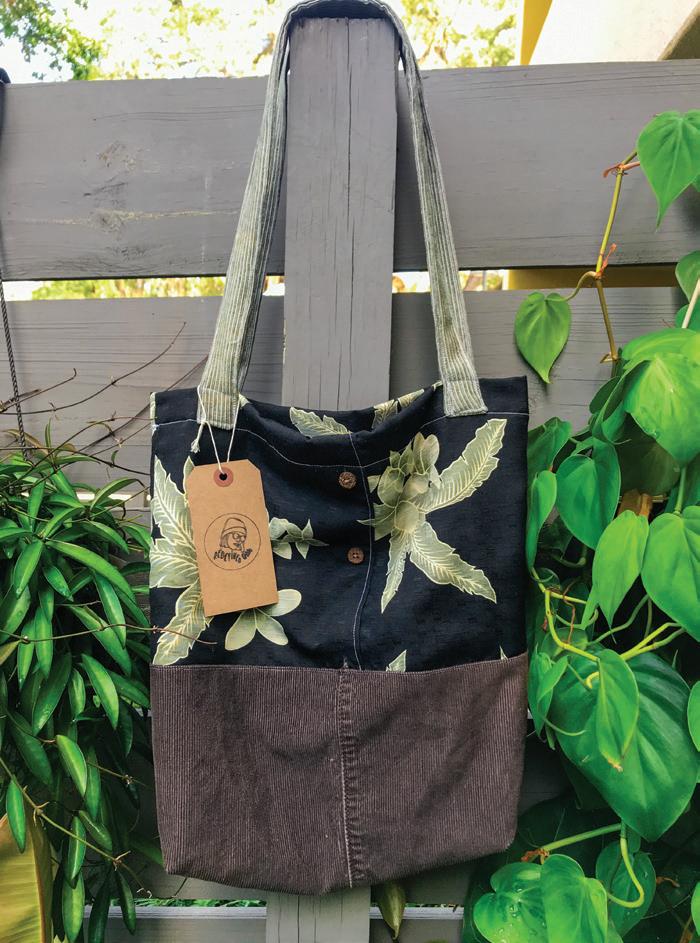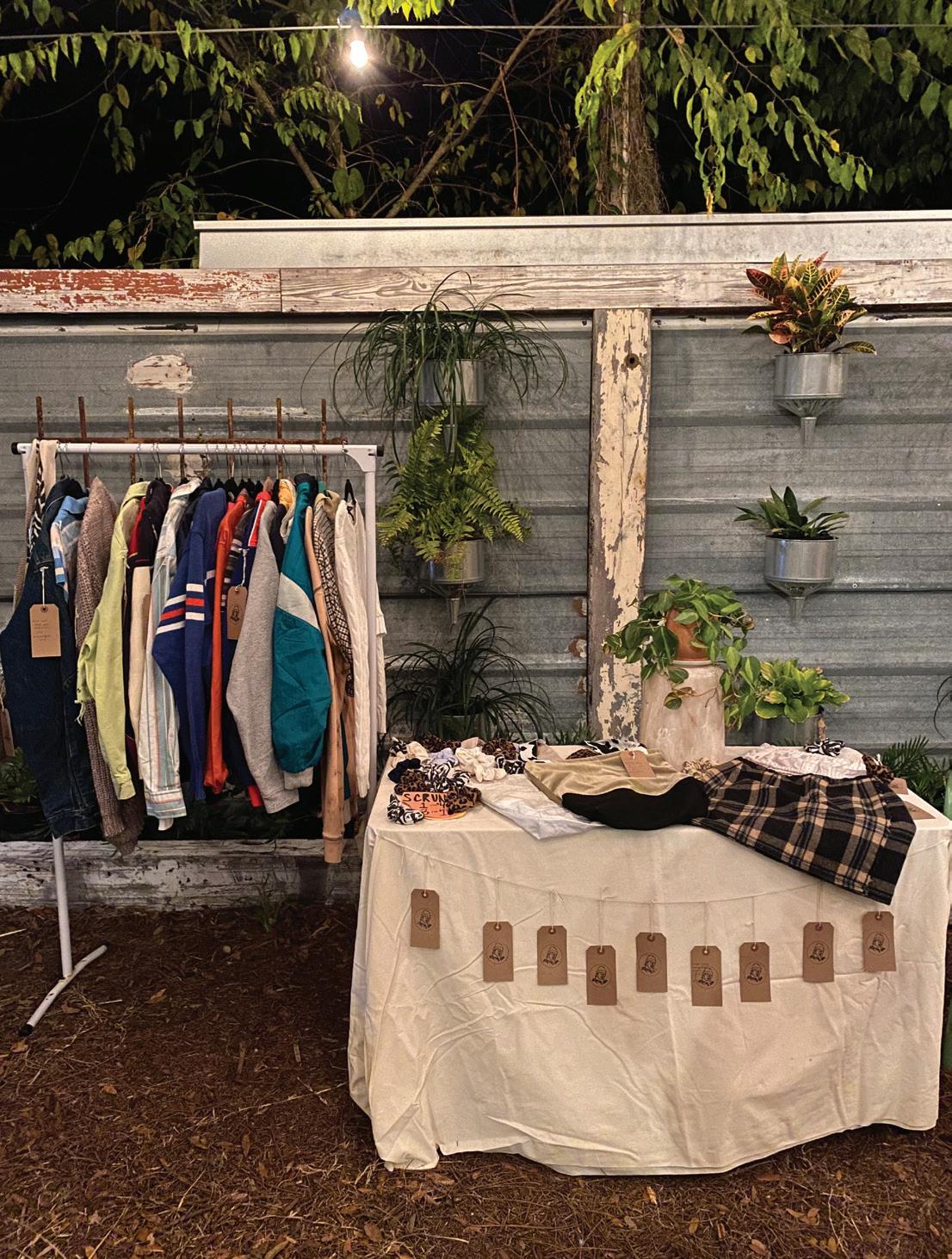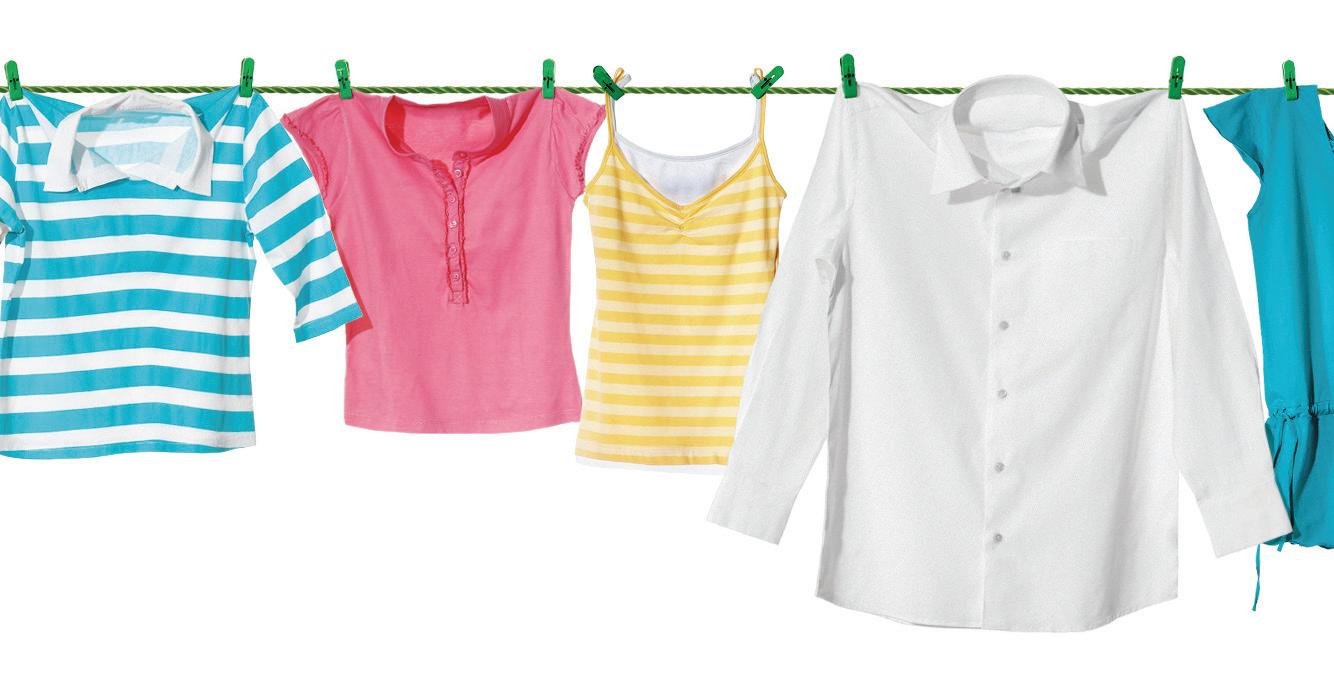
5 minute read
REDEFINED GOODS University of Florida Student Localizes Slow Fashion Movement
from Natural Awakenings Ocala/Gainesville February 2020
by Natural Awakenings - Alachua, Citrus, Marion, Sumter Co & The Villages, Florida
Mia Crisostomo started selling handmade accessories to classmates in the sixth grade. Back then, she crocheted beanie hats and tablet covers. Today, the 20-year-old college junior designs machine-washable tote bags, hair scrunchies and outfits by upcycling used clothing and household textiles. Her pupil patronage has considerably grown from a small middle school classroom to the vast campus at the University of Florida, in Gainesville, thanks to her Instagram shop @RedefinedGoods. Launched a year ago, this micro-company aligns with the slow fashion movement of inspiring consumers to shop with intention for environmentally friendly products.
“I have a history of making and selling things,” says Crisostomo, who grew up in Orlando. “My mom taught me how to sew, knit and crochet when I was about 9 years old, and ever since then I’ve been experimenting with making my own clothes and other things.” Crisostomo is currently dually majoring in marketing and sustainability studies, though she hopes her own history will lead to a successful future in slow fashion merchandising.
Advertisement
This conscious consumer finds a lot of her materials at local thrift stores, but recently began soliciting donations from family and friends with the intent to repurpose discarded hand-medowns into useful items that would otherwise clog landfills. “I usually buy things without a set design in mind, and just know I will find something to pair with it eventually. If I think material would look good as a bag, I pick it up,” she explains about her impromptu creativity.
Crisostomo’s tote bags feature a doublelayered base made from durable material such as corduroy, khaki or denim. “This makes the bag much sturdier and suitable for carrying heavier items like books and laptops,” she explains, with her student clientele in mind. Button-down shirts, bed sheets or curtains are used for the design’s top half. Scrap-made straps complete the one-of-a-kind creations that combine solid and patterned fabrics.
This young entrepreneur says she’s always loved thrifting to convert unique vintage pieces to current styles. Over time, her objective became less about fashion trends and more about purposeful fashion statements. “As I started getting deeper into my sustainability studies, I realized that I would like to make a bigger impact. I thought I could transition to bags to be marketed as a replacement for plastic and help motivate people toward a sustainable lifestyle more so than just with clothes,” she professes.
Crisostomo describes herself as “conservative” about waste. In fact, the scrunchies came about as a way to utilize leftover material. She hasn’t trashed a single scrap because she intends to introduce other upcycled projects such as pillows made with scrap stuffing. by Nancy DeVault




In addition to product posts, Crisostomo offers sustainable living tips on social media to educate and empower others that showcase her own lifestyle. She follows a vegan diet, shops at local farmers’ markets, prefers bikes over driving when possible and composts waste.
Using a sewing machine, Crisostomo devotes about 45 to 60 minutes to the construction of each bag. Then, every Friday at 5 p.m., Redefined Goods has a “bag drop” on Instagram. “I post all the bags I made that week, usually six to nine bags, and then it’s first-come, firstserve and comment to buy it; followed by a DM [direct message] for further purchasing instructions,” she explains. “I sell out every week!” Crisostomo has sold roughly 150 tote bags, 80 scrunchies and 20 garments online, plus more at occasional pop-up sales like the Indie Flea and Earth Day Festival. Redefined Goods prices tote bags at $30, scrunchies at three for $10 and clothing at $20 to $30. While she will occasionally participate in vendor events, her designs are now exclusively available on Instagram. Crisostomo plans to eventually hire other crafters to increase production and also add a social action component to Redefined Goods.
Clean and Green Eco-Laundry Tips By laundering clothes using simple ingredients and wise eco-practices, consumers can both save money and lower their carbon footprint.
Natural cleaning ingredients cited by TheEcoGuide. org include white vinegar, baking soda, lemons, borax and castile soap, all of which “can be bought in bulk with minimal packaging and have known cleaning properties that make them safe, effective and carbon-friendly alternatives.” Coarse salt is also suggested due to its moldfighting power.
Look for biodegradable laundry detergents made with plant oils and other natural ingredients that are free of phosphates, bleach and surfactants such as petroleum-based nonylphenol ethoxylates.
Consider coldwater washing. About 90 percent of the energy a washing machine uses goes toward heating water. By washing four out of five loads in cold water, a household could cut its carbon emissions by 864 pounds a year, according to Energy Star data from the U.S. Environmental Protection Agency. Because the cold setting may still heat the water to as much as 80° F, see if the washer has a preferable “tap cold” option. Also, the temperature recommendations on clothing labels represent “the highest spectrum clothes can handle,” Melissa Hockstad, president and chief executive of the American Cleaning Institute, recently told The New York Times, so the hottest water won’t necessarily clean clothes better. During rinsing, natural disinfectants that can be added include a few drops of peppermint or lavender essential oil; two teaspoons of tea tree oil; white vinegar (one-half cup per load); or one teaspoon of grapefruit seed extract.
Always assemble a full load of laundry each time. Line drying outdoors or on a drying rack indoors also conserves energy and is gentler on fabrics. Further, learn how to make homemade, felted wool dryer balls at DIYNatural. com; tossing four to six of them in each dryer load saves time, energy and money plus reduces static cling. And consider running the dryer early in the morning or overnight: this shifts energy consumption to off-peak hours, which lowers the demand on power plants and could help reduce national reliance on fossil fuels.





